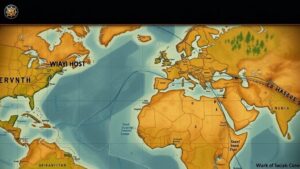Employing Elimination Techniques to Refine Artifact Search Areas
Employing Elimination Techniques to Refine Artifact Search Areas
Artifact recovery is a fundamental aspect of archaeology, providing critical insights into past human behaviors and cultures. But, the process of locating these artifacts can be significantly challenged by the vast geographical areas that need to be surveyed. To enhance the efficiency of artifact searches, researchers and archaeologists employ elimination techniques. e methodologies help to refine search areas by systematically excluding regions unlikely to yield relevant findings, thus optimizing resources and time.
Understanding Elimination Techniques
Elimination techniques involve a series of strategic approaches aimed at categorically narrowing down search locations. Due to the sheer size and complexity of many archaeological sites, these techniques are particularly useful in decision-making processes.
- Site Assessment: This involves a thorough examination of historical records, environmental data, and previous excavation reports to predict the locations of potential artifacts.
- Geospatial Analysis: Analyzing satellite images and geographic information systems (GIS) data to identify patterns and anomalies in terrain that may suggest human activity.
- Field Sampling: Conducting initial exploratory dig sites to gather preliminary data, which can indicate areas of interest more definitively.
Case Studies Demonstrating Effectiveness
Several archaeological projects have successfully implemented elimination techniques to focus their search areas, yielding remarkable findings.
The Maya Ruins of Tikal
In the dense jungles of Guatemala, the ancient Maya city of Tikal became a focal point for archaeological exploration. Employing geospatial analysis, researchers utilized LiDAR (Light Detection and Ranging) technology to analyze canopy-covered areas that were otherwise impenetrable. This technique enabled them to eliminate large sections of the jungle from immediate search consideration as they identified distinct features, such as pyramids and plazas, hidden beneath the vegetation. As a result, targeted excavation led to the discovery of artifacts that shaped the understanding of Maya urban planning and society.
Viking Age Settlements in Newfoundland
The LAnse aux Meadows site in Newfoundland benefited from a combination of historical records and environmental data. Researchers eliminated areas deemed unsuitable based on soil composition and topography, which suggested that those locations were less likely to support transient populations, such as the Vikings. By focusing on coastal regions with favorable climates for fishing and settlement, archaeologists successfully located remnants of Viking habitation and gained insights into their transatlantic explorations.
Challenges and Limitations of Elimination Techniques
While elimination techniques are invaluable, they are not without their challenges. One major limitation is the reliance on historical accuracy. If previous records are flawed or incomplete, misdirected searches may result.
Another concern stems from over-reliance on technological methods such as GIS or LiDAR, which may overlook subtle clues discernible only through in-person examinations. For example, minor surface artifacts can lead to significant discoveries, yet they may be missed in automated scans that prioritize larger patterns.
Actionable Takeaways for Practitioners
- Incorporate Multi-Disciplinary Approaches: Use insights from geology, anthropology, and environmental science to enhance your elimination strategies.
- Prioritize Fieldwork: Don’t underestimate traditional methods; firsthand assessments can provide critical information that technology may miss.
- Balance Technology and Field Expertise: Combine technological tools with the expertise of archaeologists to create a comprehensive search strategy.
Conclusion
To wrap up, employing elimination techniques is essential for refining artifact search areas in archaeology. By strategically narrowing down locations, researchers save time and resources while increasing the likelihood of significant discoveries. Adopting a balanced approach, including both modern technology and traditional fieldwork, can maximize the effectiveness of these techniques, ultimately enriching our understanding of human history.


